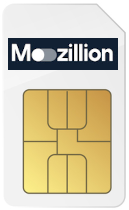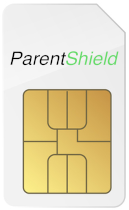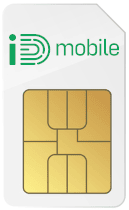Compare eSIM only deals
Filter Deals
Tariff Cost Details Networks- ALL




















 5G
5G
24 month contract
Minutes
Texts
1 GB Data
£3.00
per month
 5G
5G
12 month contract
Minutes
Texts
1 GB Data
£3.50
per month
 5G
5G
1 month contract
Minutes
Texts
3 GB Data
£3.90
per month
 5G
5G
1 month contract
Minutes
Texts
1 GB Data
£4.00
per month
 5G
5G
24 month contract
Minutes
Texts
5 GB Data
£4.00
per month
 5G
5G
24 month contract
Minutes
Texts
3 GB Data
£4.00
per month
 5G
5G
1 month contract
Minutes
Texts
5 GB Data
£4.50
per month
 5G
5G
12 month contract
Minutes
Texts
5 GB Data
£4.50
per month
 5G
5G
12 month contract
Minutes
Texts
3 GB Data
£4.50
per month
 5G
5G
1 month contract
Minutes
Texts
5 GB Data
£5.00
per month
1 Month at £2.50
 5G
5G
1 month contract
Minutes
Texts
5 GB Data
£5.00
per month
3 Months at £2.50
 5G
5G
1 month contract
Minutes
Texts
3 GB Data
£5.00
per month
 5G
5G
1 month contract
1 GB Data
£5.00
per month
 5G
5G
24 month contract
Minutes
Texts
10 GB Data
£5.00
per month
 5G
5G
12 month contract
Minutes
Texts
10 GB Data
£5.50
per month
 5G
5G
1 month contract
Minutes
Texts
10 GB Data
£5.90
per month
 5G
5G
1 month contract
Minutes
Texts
0 GB Data
£5.99
per month
 5G
5G
1 month contract
Minutes
Texts
20 GB Data
£6.00
per month
 5G
5G
1 month contract
Minutes
Texts
10 GB Data
£6.00
per month
 5G
5G
1 month contract
Minutes
Texts
4 GB Data
£6.00
per month
All stated costs assume that you will pay your monthly charges via direct debit, unless otherwise stated. Networks that require payment via direct debit may charge you a higher monthly cost if you do not pay via direct debit.
Compare eSIM Only deals
Physical SIM cards have been a familiar companion to us for years. This essential chip connects your device to your mobile network, allowing access to calls, texts, and data. However, the eSIM, or embedded SIM, offers a streamlined and convenient approach to mobile connectivity. SIM-Only Finder explores the world of eSIMs, examining their advantages and guiding you towards finding the perfect eSIM-compatible plan for your needs.
What is an eSIM?
eSIM, or embedded SIM, represents the next generation of mobile connectivity. This digital SIM chip is permanently embedded within your smartphone, smartwatch, or other compatible device, eliminating the need for a physical card.
While the eSIM itself is a physical chip embedded within your device, it requires an additional element for network connectivity. This element is an eSIM profile, a downloadable data set containing the information necessary to connect to a specific mobile network.
Activating an eSIM is easy – simply scan a QR code provided by your carrier, and you will be ready to make calls, send texts, and access data instantly.
Which networks offer an eSIM?
At the time of writing, major carriers EE, O2, Three, Vodafone, and some MVNOs offer eSIM support in the UK, and eSIMs are yet to reach their full potential by being adopted by other providers. Switching your existing UK mobile plan to an eSIM alternative might only be possible by switching to one of these listed providers.
As well as the the major uk networks (EE, O2, Three, and Vodafone), serveral MVNOs such as Giffgaff, Honest Mobile, iD Mobile, Lycamobile, Mozillion, Spusu, Tesco Mobile, Voxi also offer eSIMs.
Are eSIMs more expensive than a standard SIM card?
The cost of eSIMs compared to traditional SIM cards is a bit more complicated than a simple yes or no answer. Firstly, the initial cost of an eSIM is negligible. There typically isn't a separate fee for an eSIM. Buying a physical SIM can sometimes come with a small one-time fee to cover their cost. However, phones with eSIM compatibility are slightly more expensive to buy. This may change as eSIM technology is more widely adopted.
Those who travel overseas for work can leverage the advantages of international eSIMs. Providers outside the UK offer these, which can be a cost-effective solution for roaming outside the EU.
Upfront, eSIMs might seem more expensive due to the potentially higher device cost. However, the long-term benefits of eSIMs, like easier switching and potentially better deals, can outweigh the initial cost. It is best to compare plans and fees using our eSIM filter to determine the most cost-effective for your situation.
Can I get the same deals on an eSIM?
If your network has eSIM support then in most cases, yes. This process should be as simple as contacting your current network and asking them to switch you over to an eSIM, this should be quick and easy.
Remember – you need to ensure you have an eSIM-compatible phone before purchasing an eSIM deal.
What phones support eSIMs?
There are already a number of mobile phones that support eSIMs. Support is still growing both among network providers and phone manufacturers.
Where mobile phones do offer eSIM support, they will also have a physical sim card slot, since not all networks have adopted this technology yet.
Support mobile phones include;
Apple
- iPhone 16, iPhone 16e, iPhone 16 Plus, iPhone 16 Pro, iPhone 16 Pro Max, iPhone 15, iPhone 15 Plus, iPhone 15 Pro, iPhone 15 Pro Max, iPhone 14, iPhone 14 Plus, iPhone 14 Pro, iPhone 14 Pro Max, iPhone 13, iPhone 13 Mini, iPhone 13 Pro, iPhone 13 Pro Max, iPhone 12, iPhone 12 Mini, iPhone 12 Pro, iPhone 12 Pro Max, iPhone 11, iPhone 11 Pro, iPhone 11 Pro Max, iPhone XS, iPhone XS Max, iPhone XR, iPhone SE (2020 and 2022)
Fairphone
- Fairphone 4, Fairphone 5
- Pixel 9, Pixel 9a, Pixel 9 Pro, Pixel 9 Pro XL, Pixel 9 Pro Fold, Pixel 8, Pixel 8a, Pixel 8 Pro, Pixel 7, Pixel 7a, Pixel 7 Pro, Pixel 6, Pixel 6a, Pixel 6 Pro, Pixel 5, Pixel 5a, Pixel 5a 5G, Pixel 4, Pixel 4a, Pixel 4a 5G, Pixel 4 XL, Pixel 3, Pixel 3a, Pixel 3 XL, Pixel 3a XL, Pixel 2, Pixel 2 XL, Pixel Fold
Huawei
- P40, P40 Pro
Motorola
- Razr 40 Ultra, Razr 2022, Razr, Razr 5G
Nokia
- G60, XR21,X30
OnePlus
- OnePlus 13, OnePlus 13R, OnePlus 12, OnePlus 11, OnePlus Open
Oppo
- Find N2 Flip, Find N5, Find X5, Find X5 Pro, Find X8 Pro, Find X8, Find X3 Pro, Find X3, Reno14, Reno14 Pro, Watch X2 Mini
Samsung
- Galaxy A56, Galaxy A55 5G, Galaxy A54 5G, Galaxy A36, Galaxy A35 5G, Galaxy A23 5G, Galaxy XCover7 Pro, Galaxy Z Flip, Galaxy Z Flip 5G, Galaxy Z Flip 3 5G, Galaxy Z Flip 4, Galaxy Z Flip 5, Galaxy Z Flip6, Galaxy Z Fold, Galaxy Z Fold 2 5G, Galaxy Z Fold 3, Galaxy Z Fold 4, Galaxy Z Fold 5, Galaxy Z Fold 6, Galaxy Note 20, Galaxy Note 20 5G, Galaxy Note 20 Ultra, Galaxy Note 20 Ultra 5G, Galaxy S20, Galaxy S20 5G, Galaxy S20+, Galaxy S20+ 5G, Galaxy S20 Ultra, Galaxy S20 Ultra 5G, Galaxy S21 5G, Galaxy S21+ 5G, Galaxy S21 Ultra 5G, Galaxy S22 5G, Galaxy S22+ 5G, Galaxy S22 Ultra 5G, Galaxy S23, Galaxy S23 5G, Galaxy S23 FE, Galaxy S23+, Galaxy S23 Ultra, Galaxy S24, Galaxy S24+, Galaxy S24 Ultra, Galaxy S24 FE, Galaxy S25, Galaxy S25 Edge, Galaxy S25+, Galaxy S25 Slim, Galaxy S25 Ultra Galaxy Fold
Sony
- Xperia 1 IV, Xperia 1 V, Xperia 1 VI, Xperia 1 VII, Xperia 5 IV, Xperia 5 V, Xperia 10 III Lite, Xperia 10 IV, Xperia 10 V, Xperia 10 VI
Xiaomi
- Xiaomi 15, Xiaomi 15 Ultra, Xiaomi 14, Xiaomi 14 Pro, Xiaomi 14T, Xiaomi 14T Pro, Xiaomi 13, Xiaomi 13 Pro, Xiaomi 13T, Xiaomi 13T Pro, Xiaomi 13 Lite, Xiaomi 12T Pro, Xiaomi Poco X7
Can I go back to a standard SIM from eSIM?
If you have already made the switch to an eSIM, some life or work situations might need you to revert to using a physical SIM card. Here is a simplified breakdown of the process based on insights gleaned from a network support representative:
- Obtain a New Physical SIM: Contact your network to request a new physical SIM card. Depending on your network's policy, this might involve a minimal fee.
- Pass Network Security Verification: Your network may require you to undergo security checks to confirm your identity before processing the SIM request.
- Provide New SIM Serial Number: Once you receive the physical SIM, locate the serial number (typically printed on the card itself) and provide it to your network as instructed.
- Delete eSIM Configuration: Work with your network to deactivate and remove the existing eSIM profile from your device. This ensures your phone will recognise and utilise the new physical SIM card.
- Insert and Test the Physical SIM: Carefully insert the new SIM card into your device's designated slot (consult your user manual if needed). Power on your phone and test its functionality, including making calls, sending texts, and accessing data.
Important Note: Specific steps may vary depending on your network. For a seamless transition, it is always recommended that you contact your network's support team for guidance.
What are the benefits of an eSIM?
eSIM technology offers many advantages over traditional physical SIM cards, revolutionising how we connect to mobile networks. Here is a closer look at the key benefits:
- Effortless Network Switching: Gone are the days of waiting for a new SIM card to arrive. With eSIMs, switching providers is easy. Simply contact your new newtork with your Porting Authorisation Code (PAC), and they will activate your eSIM profile remotely, ensuring seamless service continuity.
- Dual SIM Functionality: Unlike physical SIMs, which are limited to one slot per device, eSIMs enable dual SIM functionality. This allows you to manage two separate phone numbers on the same device. This can be particularly beneficial for professionals juggling work and personal calls or for travellers seeking optimal network coverage.
- Travel-Friendly Convenience: For frequent travellers, eSIMs are a game-changer. No more scrambling for local SIM cards at airports or dealing with excessive roaming charges. eSIMs allow for easy purchase and activation of local plans directly on your device, offering cost-effective connectivity with local newtorks.
- Simplified Multi-Plan Management: eSIMs eliminate the need to carry and manage multiple physical SIM cards. This is especially useful for users who subscribe to separate plans for data and voice calls. With eSIMs, you can manage both plans seamlessly on your device.
- Enhanced Security: Physical SIM cards can be lost or stolen, compromising your data. eSIMs are securely embedded within your device, minimising the risk of unauthorised access.
In conclusion, eSIMs offer a compelling combination of convenience, flexibility, and security. As eSIM adoption continues to grow, they are poised to become the standard for mobile connectivity, allowing users greater control over their mobile experience.
Can I get 5G with an eSIM?
Absolutely! There is no inherent conflict between using an eSIM and accessing 5G networks. As long as two essential conditions are met, you will be able to experience the faster speeds offered through 5G:
- 5G-Compatible Phone: Your device itself needs to have the necessary hardware to connect to 5G networks. Check your phone's specifications to confirm 5G compatibility.
- 5G Coverage by Your Network: Your mobile network must offer 5G service in your area. Since coverage areas for 5G are still expanding, it is worth checking your network's coverage map to see if you are within a 5G zone.
If both these conditions are met, then an eSIM will function just as well as a physical SIM card for accessing 5G connectivity.
What are the advantages of an eSIM?
Beyond their obvious convenience, eSIMs offer a significant security advantage over traditional physical SIM cards. Their digital nature reduces the risk associated with physical tampering or unauthorised access, which is particularly crucial in today's environment, where digital privacy and data protection are important concerns.
Unlike a physical SIM card, which can be lost or stolen and potentially used to make unauthorised calls or access data, an eSIM is securely embedded within your device. This eliminates the vulnerability to physical theft and misuse. Additionally, eSIM profiles can be remotely deactivated if necessary, further reducing security risks.
What is the disadvantage of eSIM?
A common misconception about eSIMs is the perceived difficulty of switching networks while travelling. Unlike physical SIM cards that can be swapped out quickly, eSIMs are embedded within the device. However, this doesn't necessarily hinder travel flexibility. Many networks allow you to easily add a temporary eSIM profile for a local provider by simply scanning a QR code on your phone. This eliminates the need for physical SIM cards altogether, offering a convenient solution for international connectivity.
Why would someone use an eSIM?
eSIMs offer several advantages over traditional SIM cards, particularly for users who value convenience and flexibility. The key benefit lies in effortless network switching. Unlike physical SIMs that require removal and potential replacement, eSIMs allow you to add or remove network profiles through a simple software process, often by scanning a QR code. This streamlines switching between networks or data plans, providing greater control over your mobile connectivity.
How do you use an eSIM for international travel?
Travelling internationally with an eSIM offers a convenient and cost-effective solution for staying connected. Unlike traditional SIM cards that require physical swapping, eSIMs allow you to easily add a temporary profile for a local carrier by scanning a QR code on your phone. This eliminates the hassle of carrying and managing multiple physical SIM cards while enabling you to benefit from local rates for calls, texts, and data during your travels.
Ready to experience the future of mobile connectivity?
Consider switching to an eSIM! With ease of use, enhanced security, and growing global adoption, eSIM technology offers a convenient and future-proof way to manage your mobile plans.
Use our "Show eSIM Deals Only" option in our deals filter in our SIM-only search tool to effortlessly identify and choose eSIM-compatible deals.
More SIM only deals
Proud to be an Ofcom Accredited Comparison Website
We’re proud to be accredited by Ofcom, the UK’s independent regulator and competition authority for communications services.
Ofcom ensures fairness and transparency across communications services, holding accredited providers to high standards.
Our accreditation means that when you compare SIM only deals with us, you're not just comparing any old deals – you're comparing accurate, trustworthy and impartial deals you can trust.
With Ofcom’s seal of approval, we’re committed to helping you make informed decisions for your connectivity needs.














































